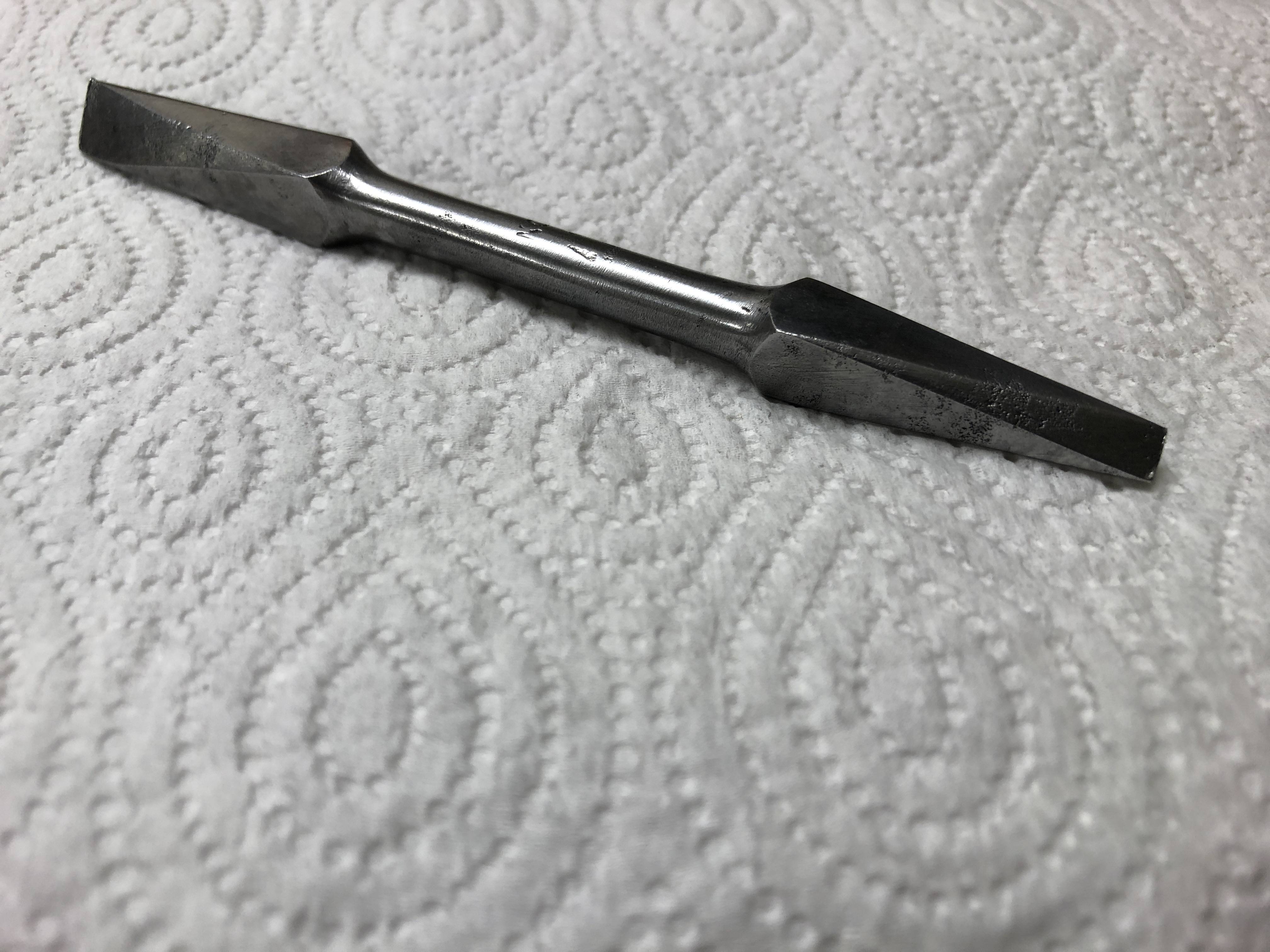Does anyone recognise the tool on the photos below?
Recently I’ve bought a set of old auger bits on eBay and among them was that tool. I de-rusted it, but have no idea what do use it for :)

-
5+1 for a reasonably white-balanced and clear photo– user5572Commented Nov 22, 2020 at 16:59
-
1It looks like a screwdriver bit to me. Reversible, with two different sizes?– Thierry LathuilleCommented Nov 22, 2020 at 17:20
-
Thank you for these answers– Piotr GórnyCommented Nov 22, 2020 at 20:26
1 Answer
That's a screwdriver bit. At the time this was made slot-head screws were pretty much all there were and being able to use your brace to drive larger screws saved space in a travelling toolkit. Plus I'm sure the bit cost less than a hardwood-handled turnscrew from any reputable maker.
And anyway, braces are quite simply excellent screw-drivers — you could quite easily insert larger screws into hard wood with your brace that you'd struggle to get even halfway home with a full-sized turnscrew.
Surprisingly, still a good option
Nothing has changed, they're still great at driving screws because of the large amounts of torque they can generate (almost unlimited once you go to sweeps 10" and above).
For situations where a cordless driver is a bit too wimpy, or where power is not available, braces aren't just a viable choice for driving screws they're arguably the choice. And this does extend to modern screws such as Allen, Pozi, Robertson and Torx. The commonest chuck type, with two jaws, can usually grip hex shafts well enough that they don't slip (unless the jaws are quite worn) so for many or most vintage braces you don't even need an adaptor* to work with the replaceable screwdriver bits of today.
*Although a few are made if one wanted to reduce wear on the chuck jaws. Honestly though, you'd have to be driving a heck of a lot of screws or bolts for this to be an issue...... and where I live ratchet braces in working condition can be found for less than the price of the cheapest adaptor!
-
1Thank you. That’s very helpful and detailed explanation. It did cross my mind that this is a screwdriver bit but I wasn’t sure. Now I am :) Commented Nov 22, 2020 at 20:25
-
2Excellent answer; where I am from they are called slotted screws, as flat-head means something else entirely (countersunk and flush). Commented Nov 23, 2020 at 5:47
-
@JimmyFix-it, thanks for your Comment, and actually slotted or slot-head seems far more common so I'll edit accordingly so there's minimal chance for misunderstanding; although anyone can see the type of screw they're intended for from the shape of the tip..... not like there are any others they'll fit :-D– GraphusCommented Nov 23, 2020 at 9:05
-
Yes, I still have a brace and occasionally use these screwdriver bits. They make short work of removing old screws where the slot is not entirely rusted away. The leverage is enormous compared with an electric drill. Commented Nov 23, 2020 at 12:35
-
Heh..."turnscrew" is completely different kind of thing where I'm at...– gnickoCommented Nov 23, 2020 at 17:31